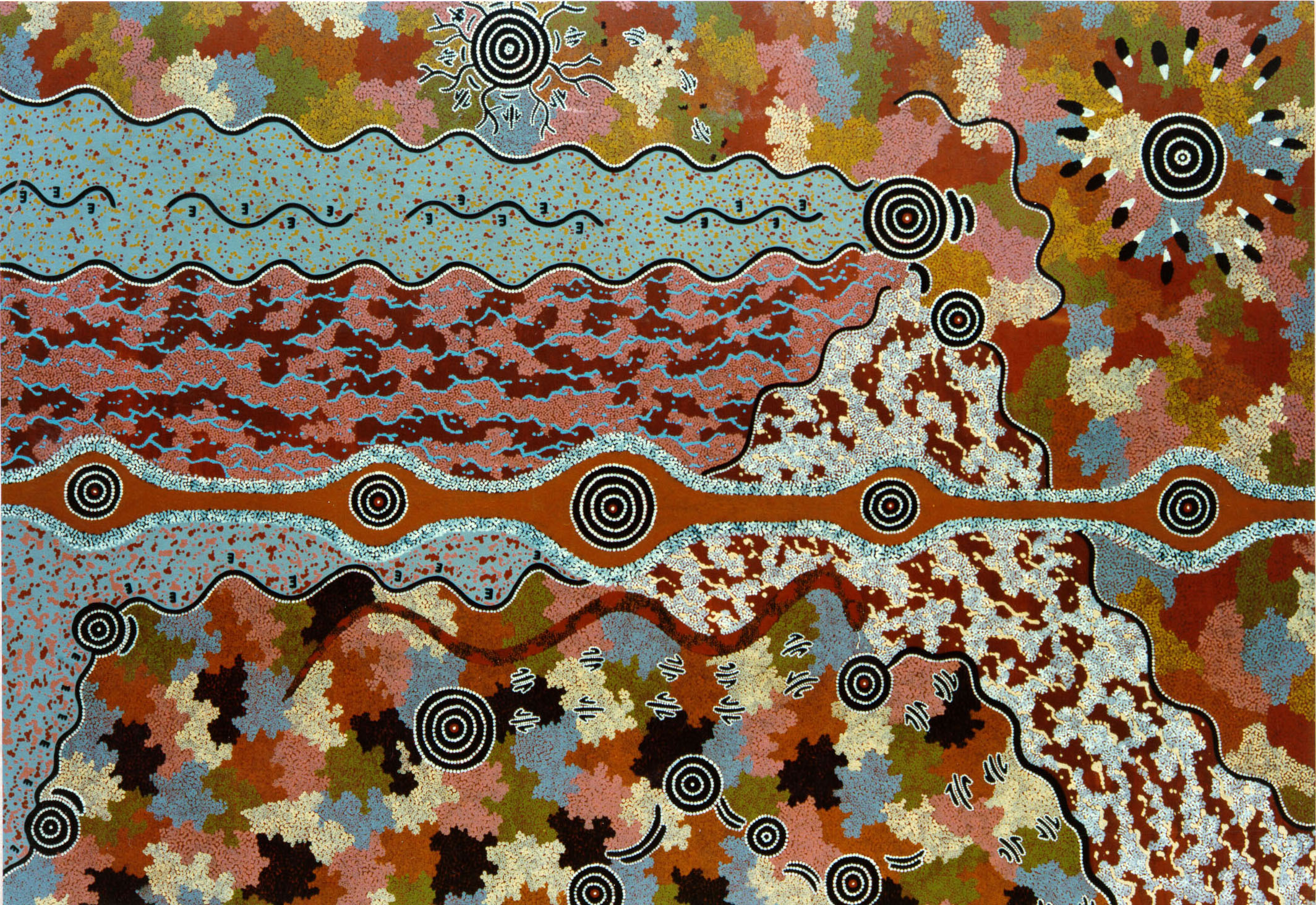In 1988 at the Asia Society Galleries in New York, an exhibition titled “Dreamings: The Art of Aboriginal Australia” changed the way the American art world began viewing Aboriginal art. The “Dreamings” exhibit was pivotal in defining Aboriginal art as contemporary fine art.
On June 11 at 7 p.m., the Kluge-Ruhe Aboriginal Art Collection of the University of Virginia will host “After the ‘Dreamings’ – 25 Years of Australian Aboriginal Art in the U.S.,” a moderated discussion with Françoise Dussart and Wally Caruana, two leading figures in the study of Aboriginal art.
“When people see contemporary Aboriginal art in museums today, they view it as fine art and not as ethnographic art – and the ‘Dreamings’ exhibition inspired that shift in perception,” said Margo Smith, director and curator of the Kluge-Ruhe Aboriginal Art Collection.
The discussion will offer perspectives on how the “Dreamings” exhibit inspired the development of contemporary Aboriginal art in America as well as its impact on American collectors and museum audiences.
“Dussart and Caruana have both contributed considerably to the way we view Aboriginal art and its international acceptance as fine art,” Smith said. “Contemporary Aboriginal art, particularly the way it is exhibited today, is very different from 1988 when the ‘Dreamings’ exhibition was considered cutting-edge.
“Dussart and Caruana will shed light on how this change occurred and what it means for Aboriginal art today.”
As a result of the “Dreamings” exhibit, several American art collectors, especially John Kluge, were inspired to create world-class Aboriginal art collections.
In the past year, two of these major collections have appeared in exhibitions at Seattle Art Museum and the Hood Museum of Art at Dartmouth College, demonstrating the growing significance of Aboriginal art to audiences worldwide.
“It was the ‘Dreamings’ exhibition that compelled John Kluge to collect Aboriginal art, which established U.Va.’s Kluge-Ruhe Museum,” Smith said. “Collectors like Kluge made a significant impact on the kind of art that was being produced for sale, elevating it from the tourist market into the fine art world.”
Dussart is a professor of anthropology and women’s studies at the University of Connecticut. Over the past 30 years, she has conducted fieldwork with Warlpiri people in Yuendumu in the Northern Territory of Australia, and was instrumental in the development of art production in central Australia. She served on the curatorial committee for “Dreamings: The Art of Aboriginal Australia,” and is the author of “La Peinture Des Aborigenes D'Australie” (Éditions Parenthèses, 1993) and “The politics of ritual in an aboriginal settlement: kinship, gender, and the currency of knowledge” (Smithsonian, 2000).
Caruana was senior curator of Aboriginal and Torres Strait Islander art at the National Gallery of Australia from 1984 to 2001, overseeing the development of one of the most important collections of Indigenous Australian art in a public museum. Caruana is the author of several publications, including “Aboriginal Art,” published by Thames and Hudson. Recently Caruana co-curated “Ancestral Modern: The Kaplan-Levi Collection of Australian Aboriginal Art” at the Seattle Art Museum.
This event is free and open to the public. Reservations are required; call 434-244-0234 or email kluge-ruhe@virginia.edu.
The Kluge-Ruhe Aboriginal Art Collection of the University of Virginia is the only museum in the United States dedicated to the exhibition and study of Australian Aboriginal art.
Media Contact
Article Information
June 5, 2013
/content/uva-s-kluge-ruhe-explores-influential-exhibit-australian-aboriginal-art

